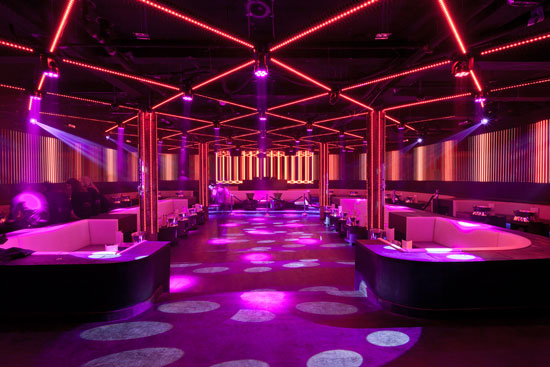The Revolutionary Strength of Lighting on Enhancing Dance Area Visuals
Wiki Article
Lighting plays a key role in establishing the atmosphere of a dancing area. It can transform a plain space into an dynamic environment that improves the overall encounter for performers and spectators alike. The appropriate lighting can impact the feeling, dynamism, and even the form of the dance being performed. By using different types of lighting, such as focused lights, colored illumination, and flashing lights, event organizers can design a dynamic environment that enthralls the audience and invites involvement.

One of the primary functions of lighting on a dance floor is to illuminate the performers. Spotlights can be used to focus attention on individual dancers or groups, making them the center of attraction. This technique not only displays their movements but also adds a layer of theatricality to the show. When dancers are lit properly, their facial expressions and skills become more apparent, allowing the spectators to value their abilities. This targeted lighting can also help to establish a narrative, guiding the spectators through the performance.
In furthermore to showcasing performers, colored lights can significantly impact the atmosphere of the dancing area. Different colors evoke different feelings; for instance, warm colors like crimson and amber can generate a sense of enthusiasm and energy, while cooler colors like blue and green can encourage tranquility and relaxation. By strategically using colored illumination, event planners can manipulate the atmosphere to align with the concept of the event or the style of the dance. This considerate approach to lighting design can enhance the overall experience for everyone involved.
Flashing lights and other active lighting effects can also add thrill to a dancing area. These features can generate a sense of beat and motion that matches the soundtrack being played. When synchronized with the rhythm, strobe lights can make the dance floor feel vibrant, inviting dancers to move in time with the flashing lights. This connection between light and sound can boost the vitality of the event, making it more pleasurable for both dancers and audience. The use of such features requires careful planning to ensure they improve rather than distract from the performance.
Finally, the complete design of the lighting arrangement is essential for creating a review cohesive look on the dancing area. A carefully planned lighting plan takes into account the layout of the area, the type of dance being performed, and the spectators' experience. By integrating various lighting methods, such as ambient lighting, highlighting, and special effects, planners can design a visually impressive setting. This focus to detail not only improves the show but also creates a lasting impact on the audience, making the event memorable. In conclusion, the powerful power of lighting is vital in improving dancing area aesthetics, creating an engaging and pleasurable encounter for all.